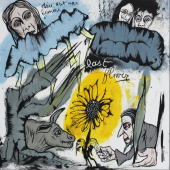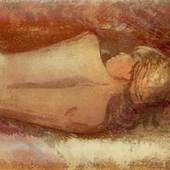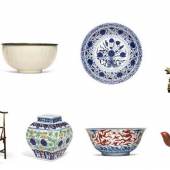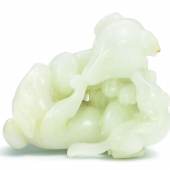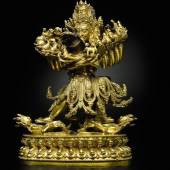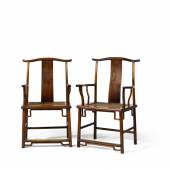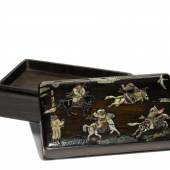New York
Exquisite Objects from Private Hands Lead Chinese Art Sale in London
-
Auktion11.05.2016
A White-Glazed Kundika Tang Dynasty 21.8 cm, 81⁄2 in. Estimate: £20,000-30,000 / HK$224,000-335,000
This ewer is one of the finest pieces among a group of Tang and Song ceramics from a Dutch private collection, notable for their elegant forms and simple glazes. Ewers of this type, known as kundika after the Sanskrit term for a ‘pure-water bottle’, were used in Buddhist ceremonies during the Tang dynasty and derived their shapes from metal prototypes.
An Inlaid Zitan Box And Cover Qing Dynasty, Kangxi Period 25.4 by 15 by 9cm Estimate: £6,000-8,000 /
This superbly decorated box of the Kangxi Period is part of a European Private Collection acquired in the 1940s in China by the late Sir Anthony Hastings George. The precise and delicate motifs illustrate in detail three men riding horses and hunting geese, a falconer on horseback and one standing attendant. Among the precious materials used are mother of pearl and lapis lazuli.
A Very Rare Cinnabar Lacquered Yixing Teapot Qing Dynasty, Qianlong Period 19.5cm Estimate: £30,000-50,000 / HK$335,000-560,000
This very rare and ornate teapot marries Yixing clay with cinnabar lacquer, resulting in a highly original vessel that is both decorative and functional. A similar cinnabar and Yixing teapot is currently held in the National Palace Museum, Taipei. Tea wares were produced in a variety of media during the Yongzheng and Qianlong reigns, including jade, cloisonné and painted enamel, and porcelain.
A Rare and Large Iron-Red and Blue ‘Dragon’ Bowl Jiajing Mark and Period 36.5cm Estimate: £30,000-50,000 / HK$ 335,000-560,000
This vibrant and rare bowl from the Jiajing period depicts iron red dragons chasing flaming pearls above tempestuous waves of cobalt blue. The dynamic motif of red five-clawed dragons above blue waves can be traced back to the early 15th century, as seen on a Xuande mark and period bowl, now located in the Palace Museum, Beijing.
A Large Blue And White ‘Lotus Bouquet’ Dish Qianlong Seal Mark And Period 41 cm Estimate: £60,000-80,000 / HK$ 670,000-895,000
This piece embodies the brilliant creativity of Qing craftsman, who were able to create vessels that successfully combined contemporary developments together with elements stemming from antiquity: the fine porcelain body and smooth tactile glaze, typical of the Qianlong period, and lotus bouquet motif that was inspired by the celebrated wares of the early Ming dynasty. Dishes painted with lotus bouquet were first revived under the Yongzheng emperor, who was keen to see historical masterpieces replicated as a reminder of the nation’s glorious past. By the Qianlong reign, the style of painting of this motif was slightly altered, and applied on dishes of various shapes and sizes, of which this piece is the largest known type.
-
Porzellanmanufaktur - Berlin Die Manufaktur Wegely (1751 - 1757). Die erste Berliner Manufaktur...
-
20.04.2024 - 24.11.2024Jeffrey Gibson on Representing the United States and Himself By Melissa Smith | Feb 16, 2024 From...
-
11.12.2024Iconic Heuer Monaco Worn by Steve McQueen in LeMansRaces to Auction at Sotheby’s New York...
-
11.05.2016Auktion »
11 MAY 2016 London | 10:00 AM BST Important Chinese Art



